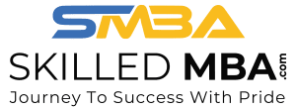Become an Instructor
October 20, 2020 2023-11-29 16:59Become an Instructor
Become an Instructor
Unlock MBA potential. Choose, teach, mentor. Join SkilledMBA now!"


Students Enrolled
Courses
Countries
Earn Money
Mentor Students
Join Our Community
Help Them Discover Their Potential
"Join SkilledMBA and shape the future of MBA education. Choose courses, teach, and mentor MBA students with your expertise. Make a meaningful impact and unlock their potential."
We're here to help
Our Instructor Support Team is here for you 24/7 to help you through your course creation needs. Use our Teaching Center, a resource center to help you through the process. This community group is always on, always there, and always helpful. Please mail us at skilledmba@gmail.com for quick support. Our team will respond within 24 hours.

Step 1: Begin your journey by visiting our website, where you’ll find a wide range of meticulously crafted course content. Explore our comprehensive library covering diverse MBA subjects and topics, ensuring you’ll have plenty of options to choose from when joining our platform as a teacher and mentor.
Step 2: Delve into the courses available and select the ones that align with your expertise and teaching interests. With the freedom to choose one or more courses, you can focus on subjects that ignite your passion and enable you to share your knowledge effectively with MBA students.
Step 3: Ready to make an impact? Sign up as a teacher on our platform and gain instant access to start teaching and mentoring MBA students. By joining our community, you’ll have the opportunity to engage with eager learners and play a vital role in shaping their educational and professional journeys.

Course Delivery:
- Use our provided course content to deliver engaging and interactive lessons.
- Leverage multimedia tools to enhance student understanding and participation.
- Encourage discussion and facilitate a collaborative learning environment.
Student Support:
- Provide timely feedback and guidance to students’ queries and assignments.
- Offer additional resources and references to supplement course materials.
Foster a supportive and inclusive atmosphere to promote student growth.
Communication:
- Maintain regular communication with students through our platform’s messaging system.
- Respond promptly to student inquiries, concerns, and feedback.
- Keep students informed about course updates, deadlines, and any changes.
Assessment and Grading:
- Design fair and comprehensive assessments aligned with course objectives.
- Provide constructive feedback on assignments and exams to facilitate student improvement.
- Ensure transparency in grading criteria and timely release of grades.
Professionalism:
- Adhere to ethical standards and maintain professional conduct throughout interactions.
- Respect student privacy and confidentiality.
- Continuously update your knowledge and teaching methodologies to deliver high-quality education.

Expertise and Interest: Choose courses aligned with your expertise and teaching interests to deliver engaging and impactful lessons.
Student Demand and Relevance: Consider courses that have high student demand and are relevant in today’s business landscape for maximum student engagement.
Course Objectives and Outcomes: Review course objectives and outcomes to ensure they align with your teaching style and desired learning outcomes.
Available Resources: Assess the availability of resources such as lecture materials, textbooks, and supplementary materials to support course delivery.
Teaching Experience: Take into account your teaching experience and comfort level with the course content and its complexity.
Market Demand and Trends: Consider courses that align with current market demand and emerging industry trends, providing students with valuable skills.
Student Background and Level: Evaluate the target audience’s background and proficiency level to ensure the course suits their needs and abilities.
Course Duration and Intensity: Consider the course duration and intensity, ensuring it is feasible for both you and the students to complete within the allocated timeframe.
Course Feedback and Reviews: Explore course feedback and reviews from previous teachers and students to gain insights into its strengths and areas for improvement.
Personal Growth and Learning: Choose courses that allow you to expand your own knowledge and expertise, fostering your professional growth as an educator.



